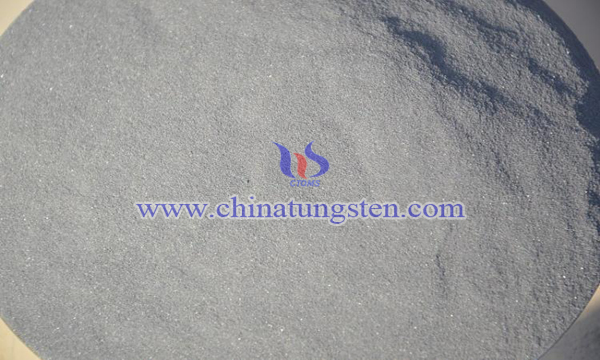Ferro-tungsten Recovery from Tungsten Waste
- Details
- Category: Tungsten Information
- Published on Tuesday, 06 August 2019 21:17
Ferro-tungsten is an important raw material in industry. Ferro-tungsten is widely used in mining, metallurgy, machinery, construction, transportation, electronics, aerospace and military industries. Traditional ferro-tungsten is made from wolframite concentrate, mixed with additives in a certain proportion and smelted in electric furnace. This smelting process has some technical problems, such as difficult source of raw materials, high requirement for raw materials, high cost, and crushing by crusher in the preparation process, resulting in uneven products.

In order to overcome the shortcomings of the existing technology, the technical scheme adopted by the researchers is to purify the tungsten-containing wastes, then use SHS process to produce ferro-tungsten solution, then directly drain the high-temperature ferro-tungsten solution to the plate centrifugal equipment, under the protection of argon atmosphere and centrifugal force of centrifugal granulation equipment, throw the high-temperature ferro-tungsten solution. The centrifuge is cooled naturally in the air and forms spherical particles naturally depending on the surface tension of high temperature solution. By controlling the flow rate of drainage and the rotating speed of centrifuge, the particle size of the product can be effectively adjusted and various fine spherical tungsten-iron powders can be produced.
(1)Preparations: First, the tungsten waste is purified and valuable metals in the waste are separated. At the same time, the content of tungsten is increased and controlled at 70%.
(2)Put the purified material into the roaster to dry roast, control the temperature at 500 ℃, roast for 8 hours, and then cool to normal temperature.
(3)According to the tungsten content in the material, calculate the required burden and prepare the material. Calculate according to the following weight ratio (kg):
The treated tungsten waste: 630 ferrosilicon: 162 aluminium powder: 135 sodium nitrate: 45 calcium fluoride: 18
(4)Put the above materials into the mixer and mix for 30 minutes to make the materials fully mixed.
(5)Put the mixed material into the prepared reactor several times. Firstly, the volume of the mixed material takes up one third of the volume of the reactor, ignition, control the temperature of the furnace at 3400-3600 ℃, and then gradually add the mixed material in the reaction process. When the volume of the molten pool reaches three-fourths of the volume of the reactor, the volume of the molten pool in the reactor reaches three-fourths of the volume of the reactor. When the discharging outlet at the bottom of the reactor is opened, the solution is slowly discharged, allowing it to flow naturally to the flat plate of the flat plate centrifuge protected by nitrogen. Through the action of the high-speed rotating centrifugal flat plate, the solution is thrown into the collection chamber around the centrifugal flat plate.
(6)When the temperature is cooled to room temperature, the materials in the collecting room are collected and the spherical-like tungsten-iron powder with uniform fineness is obtained through wind separation and screening equipment.
The center of this technological process is a plate centrifuge specially designed for producing tungsten-iron powder from tungsten-containing wastes. Through the action of a high-speed rotating centrifugal plate, the reacted solution is thrown into the collection chamber around the centrifuge plate. Spherical particles are formed naturally depending on the surface tension of the high-temperature solution, and the flow rate and separation of the drainage are controlled. The rotational speed of the core machine can effectively adjust the size of the fineness of the output particles, and it does not need to be crushed by the crusher, thus shortening the process flow and improving the efficiency.
- Tungsten Manufacturer & Supplier, Chinatungsten Online: www.chinatungsten.com
- Tungsten News & Prices of China Tungsten Industry Association: www.ctia.com.cn
- Molybdenum News & Price: news.molybdenum.com.cn
- Tel.: 86 592 5129696; Fax: 86 592 5129797; Email: sales@chinatungsten.com



 sales@chinatungsten.com
sales@chinatungsten.com